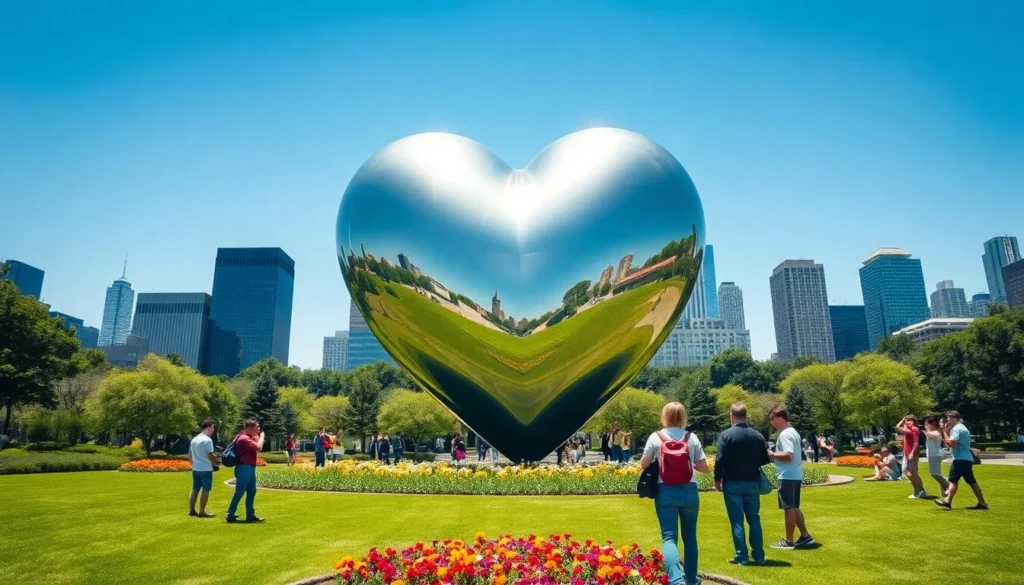Table of Contents
ToggleWhen I think of American art, the name Frederic Remington immediately comes to mind. His sculptures capture the essence of the Wild West, bringing to life the spirit of cowboys, Native Americans, and the rugged landscapes they inhabited. Each piece tells a story, evoking emotions that transport us back to a time of adventure and exploration.
Remington’s work isn’t just about aesthetics; it reflects a pivotal era in American history. As I delve into the world of Remington sculpture, I can’t help but admire how he masterfully blended realism with a sense of motion. From bronzes that seem to leap off their pedestals to intricate details that breathe life into every figure, his art continues to inspire and captivate audiences today. Join me as we explore the legacy of this iconic artist and the impact of his remarkable sculptures.
Key Takeaways
- Frederic Remington’s Legacy: Renowned for capturing the spirit of the Wild West, his sculptures offer a unique blend of realism and storytelling, depicting cowboys, Native Americans, and frontier landscapes.
- Bronze Sculpture Techniques: Remington employed the lost-wax method in his bronze casting, allowing for intricate details and lifelike qualities that enhance the dynamism and emotion of each piece.
- Historical Significance: His work reflects pivotal moments in American history, resonating with themes of adventure, bravery, and the human experience during the late 19th and early 20th centuries.
- Influence on Western Art: Remington set new standards for realism in sculpture, inspiring future Western artists to explore dynamic poses and narrative storytelling within their works.
- Notable Works: Sculptures like “The Bronco Buster” and “The Rattlesnake” illustrate his mastery in capturing movement and tension, symbolizing the challenges faced by individuals in the American frontier.
- Cultural Impact: Beyond fine art, Remington’s imagery has permeated popular culture, becoming synonymous with American identity and influencing literature, film, and advertising.
Overview of Remington Sculpture
Frederic Remington created over 200 sculptures, predominantly in bronze. His works capture the essence of the American West, portraying cowboys, Native Americans, horses, and various frontier scenes. Each sculpture emphasizes movement and emotion, showcasing Remington’s dedication to realism.
Remington’s sculptures often depict dynamic interactions, such as a cowboy on horseback roping cattle or a Native American hunting. These pieces narrate stories and evoke feelings associated with the Wild West experience. He studied anatomy and horse behavior, allowing him to accurately represent their forms and actions.
His technique in bronze casting frequently employed the lost-wax method, which provided intricate details and lifelike qualities. The quality of his craftsmanship contributed significantly to his enduring influence in American art.
Remington’s legacy includes his role in the popularization of Western themes in art. His sculptures remain highly valued, drawing interest from collectors and museums. The National Cowboy & Western Heritage Museum houses many of his notable works, ensuring his contribution to American culture endures.
Historical Context
Frederic Remington’s work is firmly rooted in a significant period of American history. His life experiences and the cultural landscape of the late 19th and early 20th centuries shaped his artistic vision and subjects.
Frederic Remington’s Life and Background
Frederic Remington was born on October 4, 1861, in Canton, New York. He grew up in a family that supported artistic pursuits, cultivating his early interest in drawing. After studying at Yale University for a brief period, he abandoned formal education to pursue a career as an illustrator and sculptor. Remington traveled extensively through the American West, immersing himself in the lives of cowboys, Native Americans, and the rugged landscapes that defined the region. His firsthand experiences and interactions informed his artwork, allowing him to create an authentic representation of Western life.
The Era of Western Sculpture
The late 19th century marked a renaissance for Western sculpture, coinciding with America’s expanding frontiers and growing interest in Western themes. Remington’s work emerged during a time when the nation sought to define its identity, and his sculptures resonated with the ideals of bravery, adventure, and rugged individualism. Numerous artists, influenced by Remington’s style, began to depict similar subjects, contributing to the broader movement of Western art. The use of bronze as a medium dominated this era due to its durability and capacity for fine detail. Remington’s dynamic, kinetic forms set a new standard in sculpture, elevating the portrayal of Western themes in American art and inspiring future generations of artists.
Notable Works and Their Significance
Frederic Remington’s sculptures capture pivotal moments of the American West, showcasing his mastery and unique storytelling ability. Two of his significant works stand out for their artistic merit and cultural importance.
“The Bronco Buster”
“The Bronco Buster” represents the quintessential cowboy experience, capturing the raw energy of the wild west. This sculpture depicts a cowboy riding a bucking bronco, showcasing Remington’s skill in rendering movement and emotion. The tension in the horse’s muscles and the cowboy’s determination convey a narrative of struggle and triumph. This piece reflects the heroic spirit of the American frontier, illustrating the challenges faced by those who sought adventure. “The Bronco Buster” remains one of Remington’s most recognized sculptures, symbolizing courage and the relentless pursuit of freedom.
“The Rattlesnake”
“The Rattlesnake” portrays a cowboy confronting a rattlesnake, embodying the constant dangers of frontier life. The meticulous detailing of both the cowboy’s tense posture and the snake’s menacing presence highlights Remington’s expertise in capturing dramatic moments. This work not only emphasizes the perilous conditions of life in the West but also speaks to the broader theme of man versus nature. “The Rattlesnake” serves as a powerful reminder of the risks involved in exploring uncharted territories and the resilience required to overcome them.
These notable works, among many others, illuminate the significance of Remington’s artistic contributions, reflecting the complexities and challenges of the American experience.
Techniques and Materials Used
Frederic Remington employed various techniques and materials that contributed to the stunning realism and emotional depth of his sculptures. The following sections provide insights into his bronze casting process and unique artistic techniques.
Bronze Casting Process
The lost-wax method characterized Remington’s bronze casting process. This technique involves creating a wax model of the sculpture, which is then coated in a ceramic shell. Once heated, the wax melts away, leaving a hollow mold. Molten bronze is poured into the mold, allowing for intricate details and precise shapes. This process enabled Remington to produce sculptures with fine textures, capturing the dynamic motion of his subjects. The detailed finishing of each piece, often conducted after casting, further enhanced the lifelike quality of his bronzes.
Unique Artistic Techniques
Remington’s artistic techniques set his work apart. He meticulously studied animal anatomy and human posture, allowing for accurate representations. His use of bold lines and dramatic contrasts emphasized movement and energy in his sculptures. He often sculpted the figures in action, conveying a sense of narrative and emotion. Additionally, his attention to surface textures, such as rough and smooth areas, added depth and complexity. These techniques combined to create sculptures that resonate with the spirit of the Wild West, showcasing Remington’s unique vision and expertise.
Impact on American Art and Culture
Frederic Remington’s contributions to American art profoundly shaped the perception of the Wild West. His sculptures resonate with themes of heroism, adventure, and the human experience, echoing through generations.
Influences on Western Art
Remington’s artistic approach influenced a generation of Western artists. His focus on dynamic poses and realistic portrayals set new standards for realism in sculpture. Other artists, such as Charles Marion Russell and Paul Manship, drew inspiration from Remington’s work. His vivid representations of Native Americans, cowboys, and frontier life transformed the art landscape, solidifying Western art as a recognizable genre.
Remington emphasized storytelling through sculpture, encouraging other artists to explore narratives within their works. His innovative techniques, including the lost-wax method, enabled greater detail and expressiveness in bronze. This technique allowed for intricate textures that enhanced the realism of each piece. The movement and energy captured in his sculptures inspired artists to emulate his style, fostering a vibrant community focused on Western themes.
Legacy of Remington Sculpture
Remington’s legacy endures in museums and private collections where his works continue to captivate viewers. His sculptures, including “The Bronco Buster” and “The Rattlesnake,” transcend mere representation, evoking emotions tied to the American experience. The National Cowboy & Western Heritage Museum celebrates his influence, showcasing his pieces as pivotal moments in American culture.
Beyond art, Remington’s work impacted popular culture, contributing to literature, film, and advertising. His iconic imagery of the Wild West became synonymous with American identity. The continued resonance of his themes—a spirit of independence, adventure, and the frontier—remains evident in modern depictions of Western life. Remington’s sculptures invite viewers to connect with the past, ensuring his artistic vision remains relevant in contemporary discussions of American history and culture.
Frederic Remington’s sculptures are more than just art; they’re a window into the soul of the American West. His ability to capture movement and emotion through bronze brings the stories of cowboys and Native Americans to life. Each piece reflects a unique blend of historical context and artistic mastery.
As I reflect on his legacy, it’s clear that Remington’s work continues to inspire and resonate with audiences today. His influence on Western art is profound, and his themes of adventure and heroism remain relevant. Visiting museums housing his sculptures offers a chance to connect with this rich cultural heritage, reminding us of the enduring spirit of the Wild West that he so beautifully portrayed.




